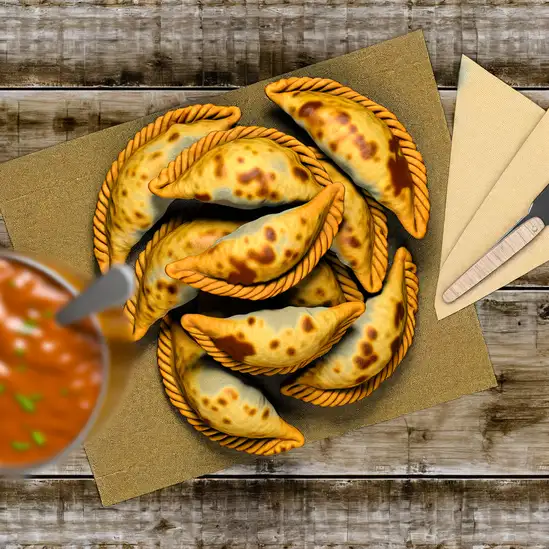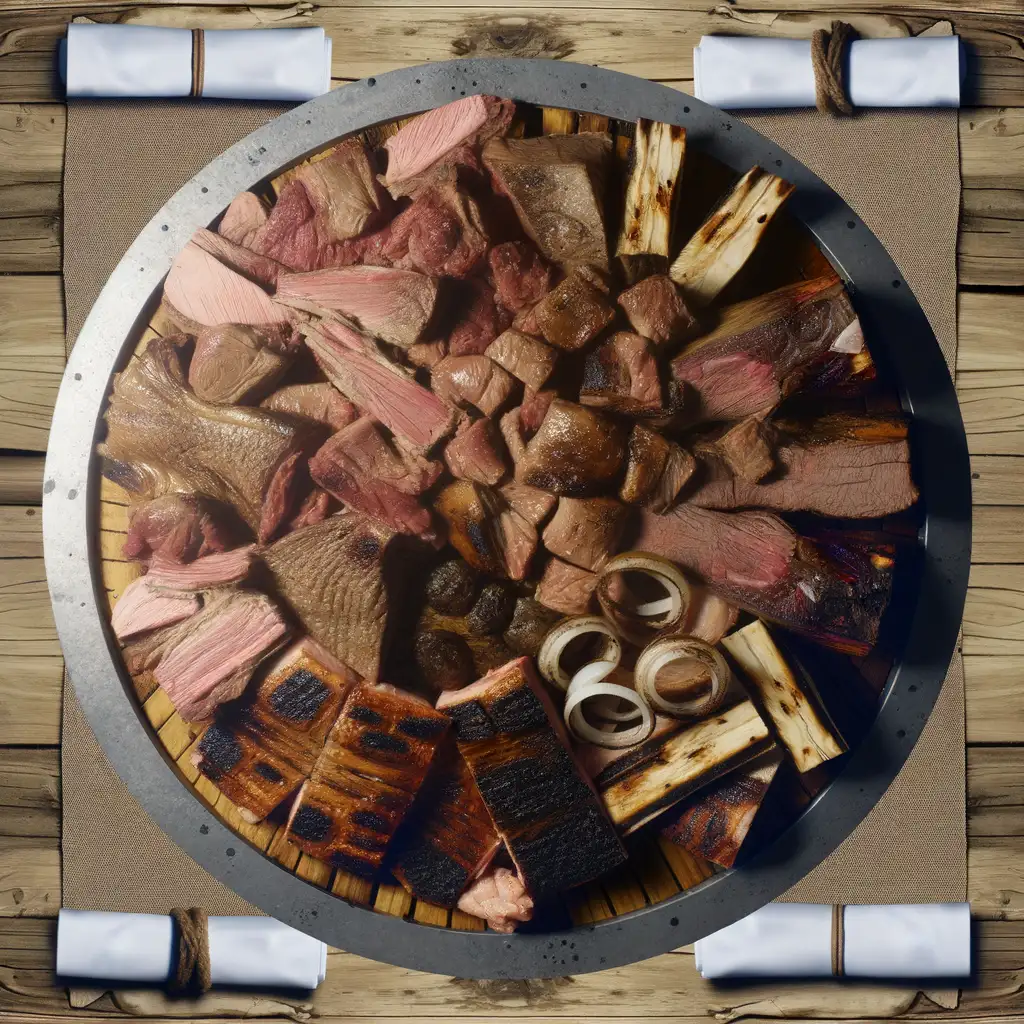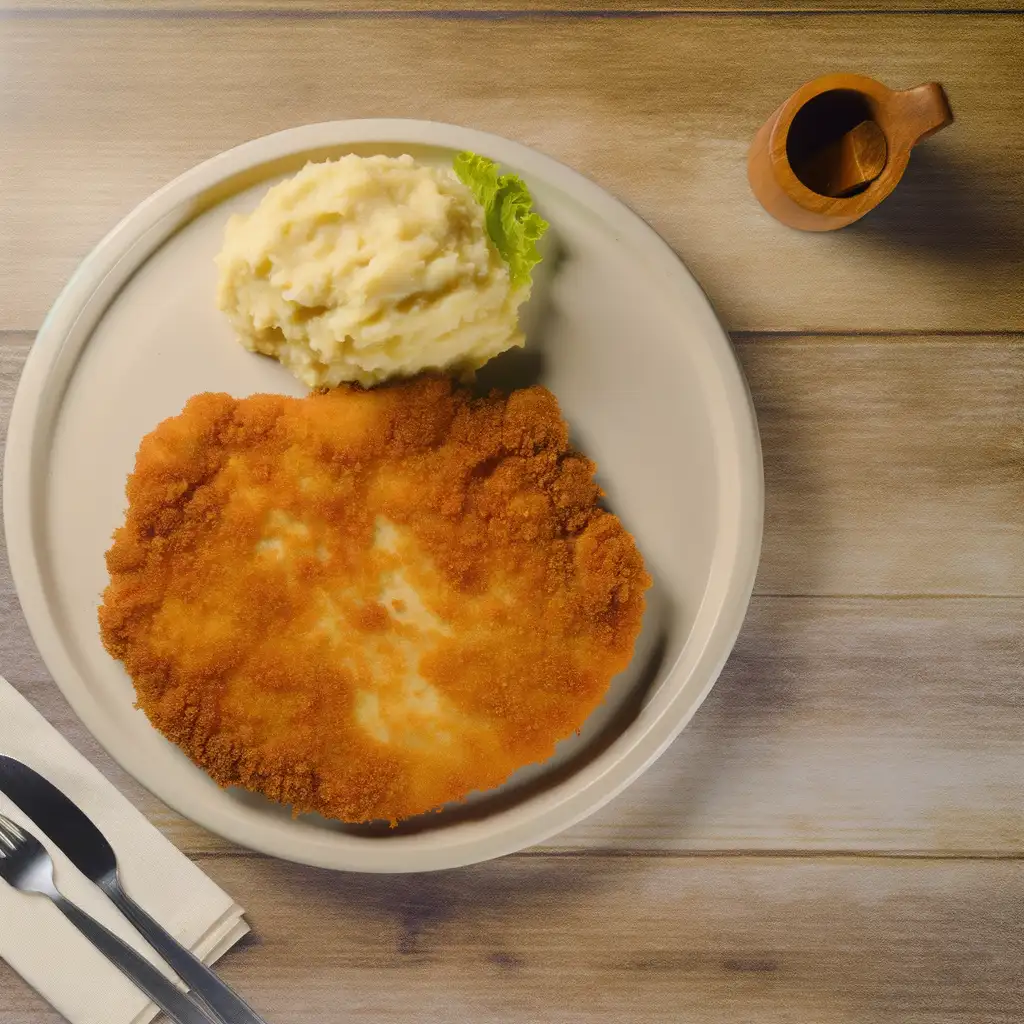



If you find yourself wandering through Departamento de Capital in Argentina,get ready to be embraced by a lively,warm energy that feels both vibrant and inviting. The city pulses with a unique rhythm—where the hum of bustling markets blends effortlessly with the laughter spilling out of cozy cafés. As you stroll down its streets,you’ll catch the rich aroma of freshly brewed coffee mingling with the earthy scent of nearby parks,inviting you to pause and soak it all in. The sunlight filters through leafy trees,casting playful shadows on colorful murals that tell stories of the city’s proud history and spirited culture. What really sets this place apart is its genuine character. People here have a relaxed,friendly vibe that makes you feel like you’re part of a close-knit community,even if you’re just passing through. The local cuisine is a delicious adventure—imagine savoring tender empanadas bursting with flavor or sharing a plate of asado with new friends,the smoky aroma teasing your senses. Music often drifts through the air,from impromptu street performances to lively tango rhythms that invite you to move along. Departamento de Capital isn’t just a destination; it’s a feeling. It’s the warmth of a sunset over the city skyline,the chatter of neighbors gathering in plazas,and the simple joy of discovering a place that feels like a second home. Trust me,once you experience its charm,you’ll want to return again and again.
The information on this page is currently being reviewed by Tripkliq and should be used as a guide only
Eng word: Hello
Eng pronunciation: OH-lah
Local language: Hola
Eng word: Goodbye
Eng pronunciation: ah-DYOS
Local language: Adiós
Eng word: Thank you
Eng pronunciation: GRAH-syahs
Local language: Gracias
Eng word: How much
Eng pronunciation: KWAN-toh KWEH-stah
Local language: ¿Cuánto cuesta?
Eng word: Toilet
Eng pronunciation: BAH-nyoh
Local language: Baño
Eng word: Help me
Eng pronunciation: ah-YOO-dah-meh
Local language: Ayúdame
Eng word: Yes
Eng pronunciation: SEE
Local language: Sí
Eng word: No
Eng pronunciation: NO
Local language: No
Eng word: Excuse me
Eng pronunciation: pehr-DOHN
Local language: Perdón
The city of Departamento de Capital, also known as San Juan, was officially founded on June 13,1562, by Spanish conquistador Juan Jufré. It was established as a strategic settlement in the Cuyo region of Argentina.
San Juan experienced a major earthquake in 1944, which led to the reconstruction of the city with modern urban planning. Today, the city is known for its earthquake-resistant architecture and wide streets.
San Juan is the birthplace of Domingo Faustino Sarmiento, one of Argentina's most influential presidents and a key figure in the development of public education in the country. His childhood home is now a museum and a popular tourist attraction.
The city is part of the renowned Cuyo wine region and is famous for its high-quality wines, particularly Syrah. San Juan's vineyards benefit from the region's sunny climate and fertile soil, making it a must-visit destination for wine enthusiasts.
The modern Cathedral of San Juan, built after the 1944 earthquake, is a stunning architectural landmark. Its bell tower offers panoramic views of the city, making it a favorite spot for visitors.
Located near San Juan, the Difunta Correa Shrine is a significant pilgrimage site in Argentina. It attracts thousands of visitors each year who come to pay their respects and leave offerings.
Opened in 2011, the Bicentennial Theater is a state-of-the-art cultural venue in San Juan. It hosts a variety of performances, including opera, ballet, and concerts, showcasing the city's vibrant arts scene.
The Punta Negra Dam, located near San Juan, is an impressive feat of engineering. It provides water for irrigation and hydroelectric power while also serving as a recreational area for boating and fishing.
A UNESCO World Heritage Site, Ischigualasto Provincial Park, also known as the Valley of the Moon, is located near San Juan. It features unique rock formations and is a treasure trove of dinosaur fossils, attracting geology and paleontology enthusiasts.
In Departamento de Capital, the most common Power Adaptor is Type C, Type I.



Savory pastries filled with a variety of ingredients such as beef, chicken, cheese, or vegetables, often baked or fried.

A traditional Argentine barbecue featuring various cuts of beef, pork, and sometimes chicken, cooked on a grill or open fire.

A hearty stew made with corn, beans, potatoes, and various meats, traditionally served during national holidays.

A breaded and fried meat cutlet, typically made from beef or chicken, often served with mashed potatoes or salad.

A popular street food consisting of a chorizo sausage served in a crusty bread roll, often topped with chimichurri sauce.

A sweet caramel-like spread made from slowly heating sweetened milk, commonly used in desserts and pastries.

A grilled cheese dish made from provolone cheese, seasoned with oregano and chili flakes, often served as an appetizer.


A ricotta cheese tart, often flavored with lemon or orange zest, and served as a dessert or snack.
Buenos Aires feels like a city that’s alive in every sense — vibrant,passionate,and endlessly inviting. From the moment you step onto its bustling streets,you’re wrapped in a mix of old-world charm and modern energy. The air carries the scent of freshly baked medialunas mingling with the faint,smoky aroma of asado grilling nearby. You’ll hear the rhythmic clatter of tango dancers’ heels on cobblestones,blending with the lively chatter spilling out of cafés and the distant hum of street musicians playing soulful melodies.
Walking through neighborhoods like San Telmo or Palermo,you’ll notice the colorful murals that tell stories of the city’s rich history and rebellious spirit. The architecture is a fascinating patchwork — elegant French-style buildings stand shoulder to shoulder with vibrant street art and quirky boutiques. There’s a warmth in the way porteños (locals) greet each other,a genuine friendliness that makes you feel like you’re part of the city’s ongoing story.
And then there’s the food — oh,the food! Juicy,perfectly grilled steaks paired with Malbec that tastes like it was made just for you. Empanadas bursting with flavor,and dulce de leche desserts that melt in your mouth. Buenos Aires isn’t just a place to visit; it’s a place to savor,to dance,to lose yourself in the rhythm of life. Trust me,once you’ve wandered its streets and soaked in its spirit,you’ll carry a piece of Buenos Aires with you long after you leave.
Imagine strolling along a sun-dappled Rambla,the salty breeze from the Río de la Plata mingling with the rich aroma of freshly brewed coffee and grilled meats wafting from nearby cafés. That’s Montevideo for you—a city that feels like a warm embrace,where the pace is unhurried but the energy hums quietly beneath the surface. It’s a place where old-world charm meets a laid-back coastal vibe,and every corner invites you to slow down and savor the moment.
Walking through Ciudad Vieja,the historic heart,you’ll hear the clatter of footsteps on cobblestones,the murmur of locals chatting over mate,and the occasional strum of a guitar from a street musician. The colorful murals and colonial architecture tell stories of a city proud of its roots yet open to creative expression. Montevideo’s markets burst with fresh produce,artisanal cheeses,and the unmistakable scent of asado grilling—Uruguay’s beloved barbecue that’s as much a social ritual as a meal.
What makes Montevideo truly special is its genuine warmth. People here have a relaxed friendliness that makes you feel like you belong,even if you’re just passing through. Whether you’re sipping a craft beer in a cozy bar or watching the sunset paint the sky over the coastline,there’s a comforting rhythm to life here that stays with you long after you leave. It’s not just a city to visit—it’s a place to experience,to breathe in,and to carry with you.
Rosario has this effortlessly vibrant energy that grabs you the moment you step onto its wide,tree-lined streets. It’s a city where the rhythm of daily life feels both relaxed and alive,like a slow dance with a lively beat underneath. Walking along the Paraná River,you’ll catch the scent of fresh bread from nearby bakeries mixing with the earthy aroma of the river,while locals jog,chat,and sip mate in the parks. The skyline,dotted with modern buildings and historic architecture,reflects a city proud of its roots but eager to embrace the future.
What really makes Rosario stand out is its deep connection to art and culture. Murals splash color across walls,telling stories of history and hope,while street musicians fill the air with tango,rock,and folk tunes. The city’s cafes invite you to linger over a cortado or a slice of medialuna,watching life unfold around you. And if you’re a foodie,Rosario’s culinary scene is a delightful surprise—imagine savoring perfectly grilled Argentine beef at a parrilla,paired with a glass of Malbec,all while the sun sets over the river.
There’s a warmth in the people here that’s impossible to miss. Whether you’re chatting with a vendor at the Mercado del Patio or joining locals in a lively plaza,you feel part of a community that’s proud,passionate,and welcoming. Rosario isn’t just a place to visit—it’s a place to feel alive,to soak in the stories,and to create your own.
Imagine stepping into a place where time seems to slow down,and every cobblestone street whispers stories from centuries past—that’s Colonia del Sacramento. The moment you arrive,there’s this gentle,laid-back rhythm in the air,a blend of old-world charm and seaside calm that instantly puts you at ease. As you wander through the historic quarter,your eyes catch the sun casting golden hues on whitewashed walls,while the salty breeze from the Río de la Plata mingles with the faint aroma of freshly baked pastries from a nearby café.
The city’s character is a beautiful patchwork of Portuguese and Spanish influences,visible in its colorful buildings and quaint plazas. You’ll hear the soft murmur of locals chatting in Spanish,the clinking of glasses as people savor a glass of Tannat wine,and the distant hum of boats bobbing gently in the harbor. There’s a warmth here—not just in the weather,but in the way people welcome you,eager to share stories or recommend their favorite spot for a slow,leisurely lunch.
Don’t miss the chance to climb the old lighthouse for sweeping views that stretch across the water,or to lose yourself in the narrow alleys where timeworn doors and blooming bougainvillea create perfect little photo moments. And when evening falls,the city glows softly under lantern light,inviting you to linger over a plate of fresh seafood and a glass of local wine,soaking in the peaceful magic that makes Colonia feel like a place you’ll want to return to again and again.
A picturesque city near Buenos Aires,famous for its canals,vibrant markets,and as a hub for exploring the islands of the Paraná Delta.
ExploreIf you ever find yourself craving a place where nature’s raw power meets a laid-back,friendly vibe,Puerto Iguazú is where you want to be. The moment you step into this small town,there’s a hum in the air—a mix of tropical birdsong,the distant roar of waterfalls,and the chatter of locals who seem genuinely happy to share their corner of the world. It’s not just a gateway to the famous Iguazú Falls; it’s a place that wraps you in warmth,both from the sun and the people.
Walking through the streets,you’ll catch the scent of fresh yerba mate brewing in cozy cafés,mingling with the earthy aroma of rain-soaked jungle nearby. The colorful markets burst with handcrafted goods and the sweet tang of tropical fruits,inviting you to slow down and savor the moment. At night,the town softens into a gentle rhythm—music spills from open windows,and the air carries the faint spice of grilled meats from local parrillas.
What makes Puerto Iguazú truly special is its blend of cultures—Argentine,Guaraní,and a touch of Brazilian influence—that colors everything from the food to the festivals. It’s a place where adventure and relaxation coexist effortlessly. Whether you’re gearing up to stand in awe before the thunderous falls or simply sipping a cold cerveza on a sun-dappled terrace,Puerto Iguazú feels like a warm invitation to experience life a little more vividly.
Scammers install skimming devices on ATMs to steal card information and PINs from tourists withdrawing cash.
Criminals on motorcycles or bicycles snatch bags or purses from unsuspecting tourists walking on the street or sitting at outdoor cafes.
Vendors accuse tourists of breaking an item in their shop and demand payment, even if the tourist did not cause the damage.
Tourists are given counterfeit bills or incorrect exchange rates when exchanging money at unofficial locations.
A person distracts the tourist (e.g., by spilling something on them or asking for help), while an accomplice steals their belongings.
Scammers approach tourists asking for donations to fake charities or causes, often using emotional stories to manipulate them.
Unlicensed or unofficial taxi drivers overcharge tourists by taking longer routes or using rigged meters.
Scammers pose as tour guides and charge tourists for subpar or nonexistent tours.
Street vendors or shops near tourist areas charge exorbitant prices for goods or services, taking advantage of tourists unfamiliar with local prices.
Thieves target tourists in crowded areas, such as buses, markets, or tourist attractions, to steal wallets, phones, or other valuables.
Argentina has strict laws regarding the possession, use, and trafficking of illegal drugs. While personal use of small amounts of marijuana has been decriminalized in some cases, public consumption and possession of larger quantities remain illegal and can result in fines or imprisonment. Tourists should avoid carrying or using any illegal substances to avoid legal issues. Additionally, the sale and distribution of drugs are heavily penalized under Argentine law.
In the city of Departamento de Capital, Argentina, smoking is regulated under national and local laws. Smoking is prohibited in enclosed public spaces, workplaces, public transportation, and certain outdoor areas such as schools, hospitals, and playgrounds. Designated smoking areas may be available in some locations. Tourists should look for signage indicating smoking restrictions and avoid smoking in non-designated areas to avoid fines.
Vaping is subject to similar restrictions as smoking in Departamento de Capital, Argentina. The use of electronic cigarettes is prohibited in enclosed public spaces, workplaces, and public transportation. While vaping is less common than smoking, tourists should adhere to the same rules and look for designated areas where vaping may be allowed.
What are other people saying about Departamento de Capital?
Recent Social posts about Departamento de Capital
There is nothing to show you for now.